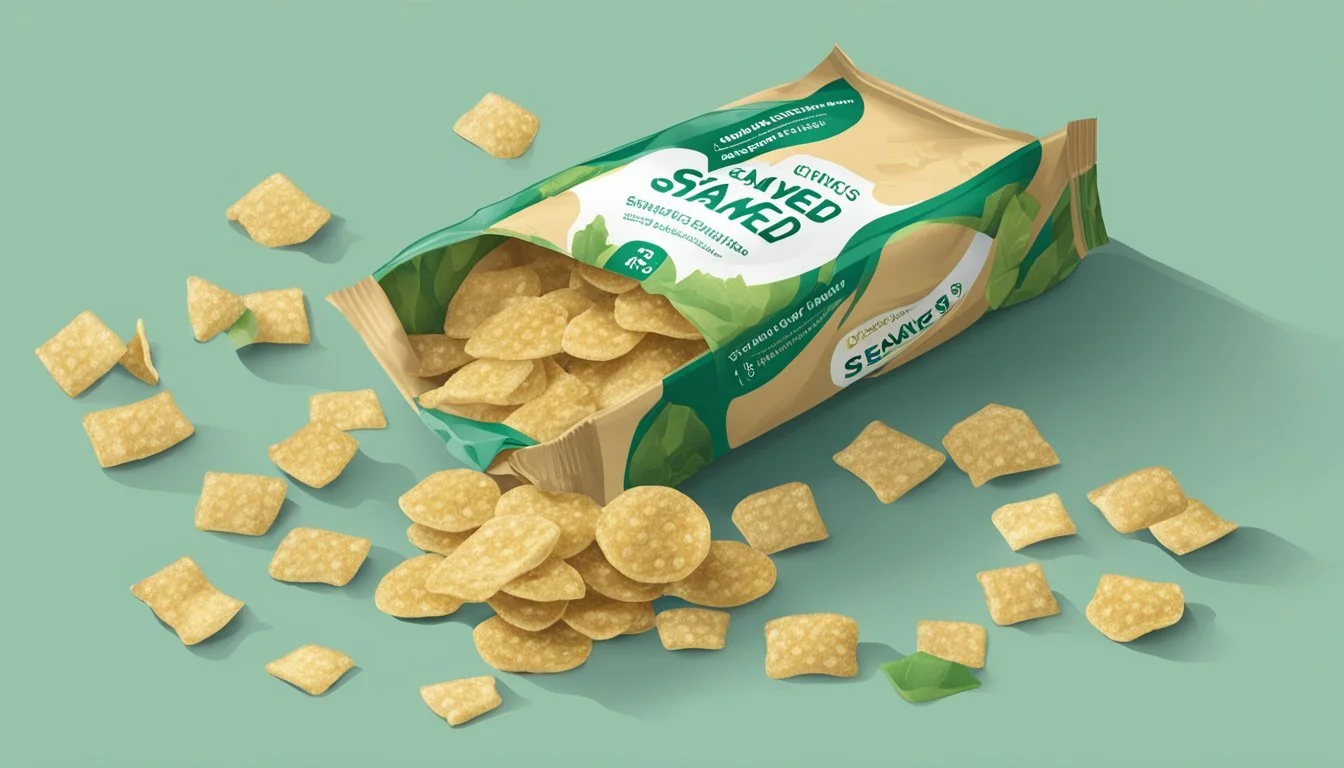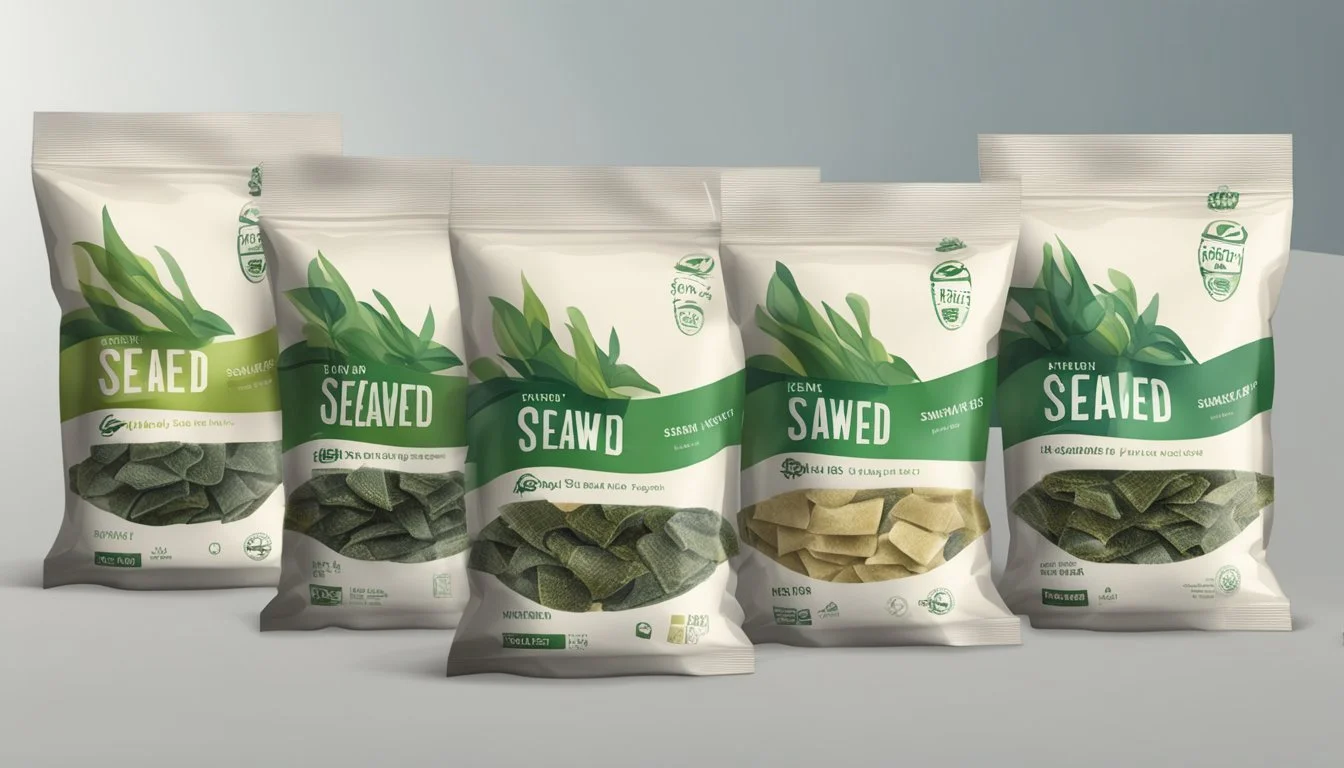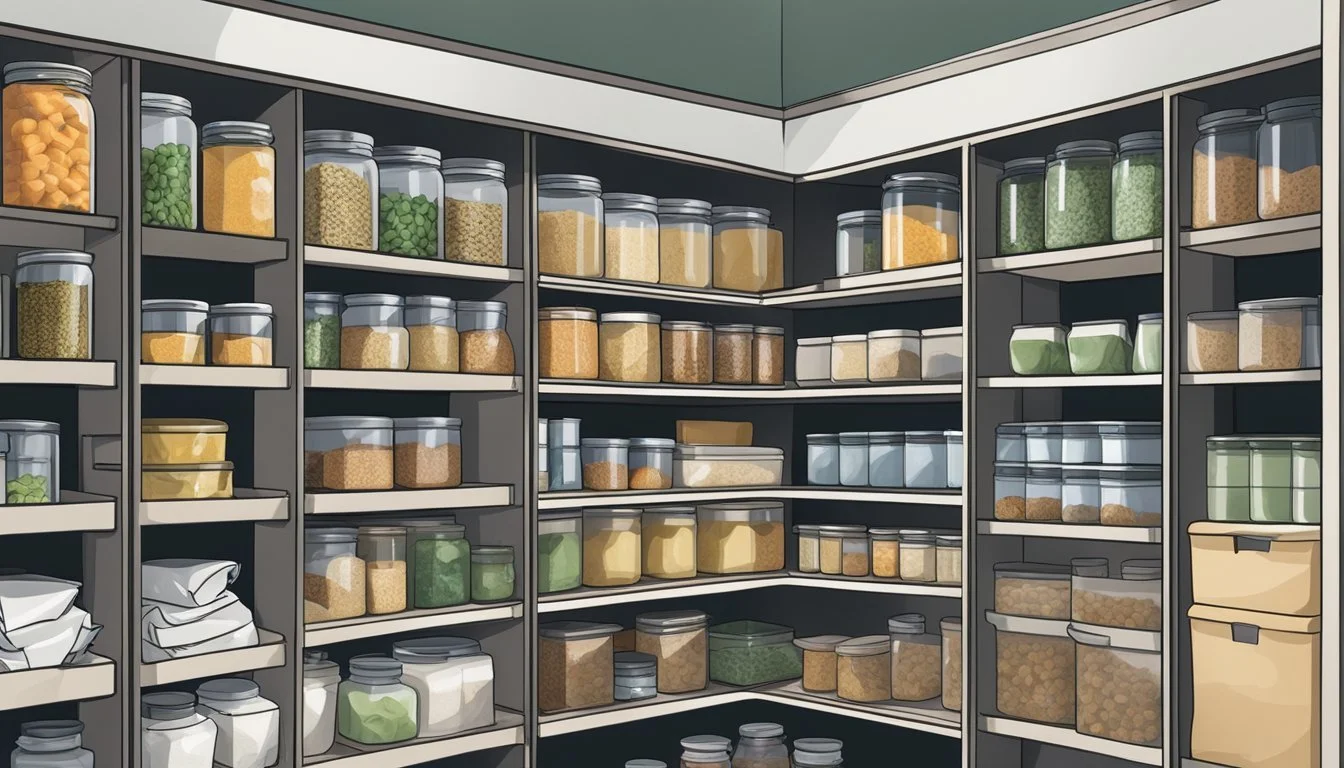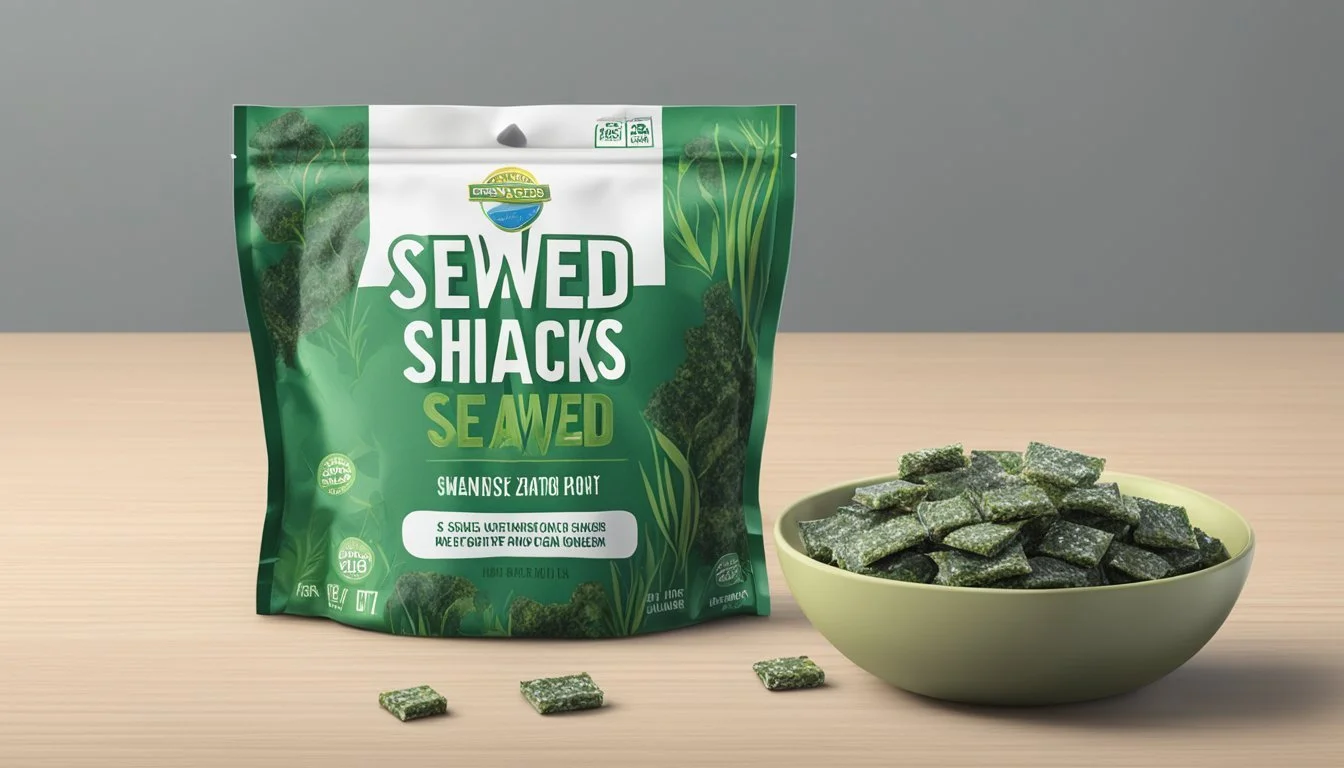Do Seaweed Snacks Go Bad?
Shelf Life and Storage Tips
Seaweed snacks, such as nori, are popular for their unique flavor and nutritional benefits. Consumers often wonder if these snacks can go bad and how long they can safely enjoy them. The shelf life of seaweed snacks, including nori, can generally extend up to two years when stored unopened in a cool, dry place. This longevity is due to the low moisture content of seaweed, which makes it less prone to bacterial growth compared to other perishable foods.
Proper storage is key to maintaining the quality of seaweed snacks. Keeping them in an airtight container away from direct sunlight helps preserve their taste and texture. Opening the package reduces their shelf life slightly, but they can still last for many months if sealed properly after each use.
Despite nori and other seaweed snacks having a long shelf life, it's essential to pay attention to their condition. Even if they don't become unsafe to eat, they can lose their crispiness and flavor over time, especially if exposed to moisture. By following proper storage tips, consumers can ensure their seaweed snacks remain fresh and flavorful until the very end.
Understanding Seaweed Snacks
Seaweed snacks, derived from various types of seaweed, offer a unique blend of flavor and nutrition. These snacks are often lauded for their rich profiles of vitamins and minerals and come in multiple varieties to cater to different tastes.
Types of Seaweed Used
Popular seaweed snacks typically use nori, kombu, wakame, dulse, and kelp.
Nori: Commonly used in sushi, this seaweed is thin, crispy, and often roasted for snacks.
Kombu: Thick and leathery, kombu is usually dried and used as a seasoning or in soups.
Wakame: Soft and slippery, wakame is typically found in salads and soups.
Dulse: Known for its chewy texture and slightly spicy flavor, dulse is eaten dried or added to dishes for seasoning.
Kelp: Thick and nutrient-dense, kelp is often used in broth or dried and powdered for snacks.
Nutritional Profile of Seaweed Snacks
Seaweed snacks are nutrient-rich, making them popular among health-conscious consumers.
Vitamins and Minerals: They are excellent sources of vitamins A, C, E, and K, which support various bodily functions like immune health and blood clotting.
Iodine: Crucial for thyroid function, seaweed offers ample iodine, particularly kelp.
Protein and Fiber: Seaweed is also a decent source of protein and fiber, aiding in muscle repair and digestive health.
Iron and Magnesium: These minerals contribute to energy production and bone health respectively.
Popular Seaweed Snack Varieties
Seaweed snacks come in different forms and flavors to suit various preferences:
Roasted Seaweed Sheets: Often small, crispy, and lightly salted, these are made from nori.
Seaweed Chips: Usually made from dulse or kelp, these are thicker and have a crunchy texture.
Seaweed Seasoning: Finely ground kombu or wakame used to sprinkle over foods.
Seaweed Salad: Typically made from wakame, offering a chewy texture and often seasoned with vinegar and sesame oil.
Shelf Life and Quality Indicators
The shelf life of seaweed snacks significantly depends on packaging, expiration dates, and signs of spoilage. These factors help maintain the freshness and safety of the snacks.
Packaging and Its Influence on Freshness
Packaging plays a crucial role in extending the shelf life of seaweed snacks. Airtight containers and sealed packaging shield the product from moisture and contaminants, preserving its quality.
Moisture and air exposure can significantly impact the texture and taste of seaweed snacks. Proper packaging minimizes these risks. Vacuum-sealed and resealable packages are highly effective in maintaining freshness.
Storage conditions matter as well. Keeping packaged seaweed snacks in a cool, dry place enhances their longevity. Refrigeration and freezing are also options for extending shelf life, though they must be stored in airtight containers to prevent moisture accumulation.
Expiration Dates and Their Reliability
The expiration date on seaweed snacks often refers to peak quality rather than safety. These dates are guidelines provided by the manufacturer to ensure consumers enjoy the product at its best.
"Best by" dates are about quality preservation. Seaweed snacks can often be safely consumed past these dates if stored properly.
It is crucial to consider the type of seaweed snack. For example, nori sheets may have a shelf life of 2-3 years if unopened, while roasted seaweed snacks may last 1-2 years. Checking for other quality indicators is essential when consuming past the expiration date.
Signs of Spoilage in Seaweed Snacks
Identifying signs of spoilage can prevent consuming potentially unsafe products. Mold is one of the most visible indicators. Discoloration, such as unusual dark or pale spots, also suggests spoilage.
A change in texture can be a sign. Fresh seaweed snacks should be crisp and dry. Softness or chewiness may indicate exposure to air or moisture, leading to spoilage.
Smell is another critical indicator. An off or rancid odor signifies that the seaweed snacks are no longer fresh and may be unsafe to eat. Always inspect seaweed snacks for these signs before consuming, especially if they are past the expiration date.
Storage Solutions to Prolong Freshness
Proper storage methods are essential for maintaining the freshness and quality of seaweed snacks. Ensuring that seaweed is kept in optimal conditions can significantly extend its shelf life.
Ideal Conditions for Seaweed Storage
Storing seaweed in the right environmental conditions is crucial. Temperature should be kept cool, ideally under 70°F. Humidity must be minimized, as moisture can quickly degrade seaweed's crispness.
Light exposure should also be limited. It is recommended to store seaweed in a dark pantry or cabinet, away from direct sunlight. For maximum preservation, some prefer to store it in the refrigerator, which can further reduce the risk of moisture and heat exposure.
Benefits of Airtight Containers
Using airtight containers can greatly enhance the shelf life of seaweed snacks. These containers prevent moisture from penetrating and keep the product crisp. Airtight containers are especially useful in humid climates where exposure to air can quickly spoil seaweed.
Vacuum-sealed bags can also be used for an added layer of protection. These methods ensure that the storage environment remains stable and free of external contaminants, thereby preserving the seaweed’s flavor and texture.
Using Silica Gel Packets to Absorb Moisture
Incorporating silica gel packets into seaweed storage is an effective way to control and absorb moisture. These packets are often used in conjunction with airtight containers to enhance their efficiency.
Silica gel packets work by attracting excess humidity, thereby maintaining a dry environment. When using silica gel, make sure the packets are kept in close proximity to the seaweed without coming into direct contact. This method is particularly beneficial for extended storage periods, ensuring the seaweed remains crisp and free from spoilage.
Safety and Consumption
Seaweed snacks offer nutritional benefits but pose risks concerning iodine levels and potential contamination with heavy metals. Moderation is crucial to maximizing their benefits while mitigating these risks.
Health Risks Associated with Expired Snacks
Eating expired seaweed snacks is generally low risk regarding safety. Unlike perishable foods, seaweed tends to remain safe beyond its expiration date due to its low moisture content and natural preservatives.
However, expired snacks may have compromised flavor, texture, and nutrients. The seaweed’s crunchiness could diminish, and some essential nutrients might degrade over time. Consumers should check for any unusual odor or appearance before consuming expired seaweed snacks.
Importance of Consuming in Moderation
Though seaweed snacks provide nutrients like iodine, protein, and fiber, excessive consumption may lead to adverse health effects. High iodine levels found in some seaweed types can disrupt thyroid function, potentially leading to hypothyroidism or hyperthyroidism.
Additionally, certain seaweeds may contain heavy metals such as arsenic, which pose significant health risks if consumed in large quantities. Regulation of heavy metal content in seaweed is limited, making it important for consumers to diversify their dietary sources.
Incorporating seaweed snacks into a balanced diet can maximize their benefits, ensuring nutrient intake without overconsumption risks.






